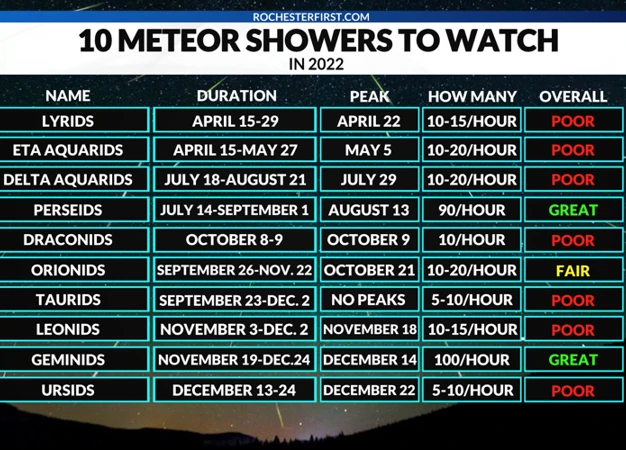Every year, our planet is treated to a spectacular celestial show known as meteor showers. These breathtaking displays of cosmic debris streak across the night sky, captivating the hearts and imaginations of stargazers around the world. While some meteor showers occur on a regular basis, others are more sporadic and unpredictable, adding an element of wonder and excitement to the experience. In this article, we will explore the best meteor showers to watch each year, highlighting the most anticipated celestial events of the spring, summer, fall, and winter seasons. So grab your telescopes, find a cozy spot under the stars, and prepare to be amazed by the dazzling beauty of these natural phenomena.
Contents
- The Science of Meteor Showers
- The Best Meteor Showers of Spring
- The Best Meteor Showers of Summer
- The Best Meteor Showers of Fall
- The Best Meteor Showers of Winter
- Conclusion
-
Frequently Asked Questions
- 1. What causes a meteor shower?
- 2. When is the best time to view meteor showers?
- 3. How often do meteor showers occur?
- 4. What is the difference between a meteor and a meteoroid?
- 5. Can I see meteor showers with the naked eye?
- 6. What is the best way to photograph a meteor shower?
- 7. Are meteor showers dangerous?
- 8. Can I make a wish on a shooting star?
- 9. How long do meteor showers last?
- 10. Can I predict where the meteors will appear during a meteor shower?
- References
-
Frequently Asked Questions
- 1. Can I see a meteor shower from anywhere in the world?
- 2. What is the best time to watch a meteor shower?
- 3. Do I need any special equipment to watch a meteor shower?
- 4. How many meteors can I expect to see during a meteor shower?
- 5. Can I see a meteor shower from a city or do I need to be in a dark location?
- 6. Can I photograph a meteor shower?
- 7. Are all meteor showers visible every year?
- 8. What causes a meteor shower?
- 9. Are meteor showers dangerous?
- 10. Can I make a wish on a shooting star during a meteor shower?
- References
- Read More
The Science of Meteor Showers
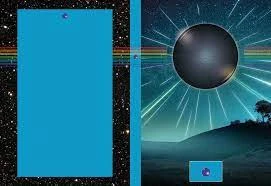
Meteor showers are a fascinating spectacle that can be explained through the science of astronomy. These captivating displays occur when our planet Earth passes through the debris left behind by comets as they orbit the sun. As comets travel through space, they leave behind a trail of dust and small rocks. When the Earth crosses paths with this debris, the particles enter our atmosphere at high speeds, causing friction and heat. This process vaporizes the particles, creating the streaks of light that we see as meteor showers. The radiant point, or the point in the sky where the meteors appear to originate from, is determined by the direction from which the Earth’s orbit intersects with the comet’s orbit. This is why meteor showers often have names corresponding to the constellations near their radiant point. The Perseid meteor shower, for example, appears to radiate from the constellation Perseus. Understanding the science behind meteor showers can add a deeper appreciation for the beauty and wonder of these celestial phenomena.
The Best Meteor Showers of Spring
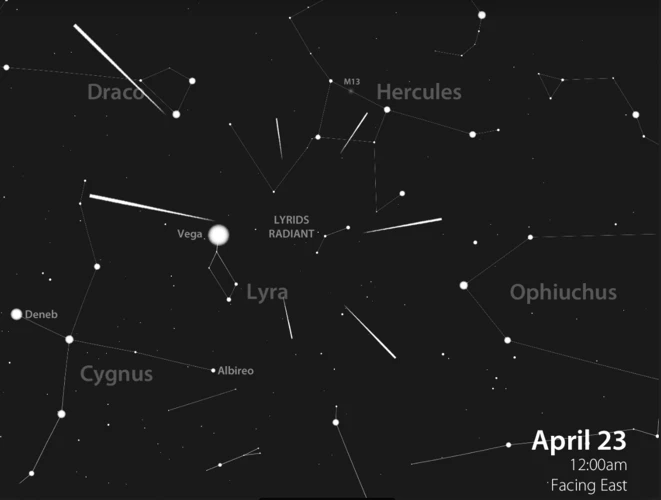
The spring season offers two mesmerizing meteor showers that stargazers eagerly anticipate each year. The first one is the Lyrid Meteor Shower, which takes place in late April. Named after the constellation Lyra, this shower is known for its bright and fast meteors. With an average of 15 to 20 meteors per hour, the Lyrids offer a dazzling display as they streak across the night sky. The second meteor shower of spring is the Eta Aquarid Meteor Shower, which peaks in early May. This shower is associated with Halley’s Comet, one of the most famous comets in history. While the Eta Aquarids can be seen from both hemispheres, they are more vibrant in the southern hemisphere. With about 30 meteors per hour and their distinctive speed, the Eta Aquarids provide a breathtaking celestial showcase. So mark your calendars and prepare to witness these astronomical wonders during the delightful spring season.
1. Lyrid Meteor Shower
The Lyrid Meteor Shower is one of the oldest known meteor showers, with records of its observation dating back more than 2,700 years. It occurs each year in April and is named after the constellation Lyra, as its radiant point lies near the bright star Vega. The Lyrids are known for their fast and bright meteors, with an average speed of around 30 miles per second. While they may not be the most prolific meteor shower, with around 10 to 20 meteors per hour, they make up for it with their occasional bursts of activity, known as outbursts. These outbursts can produce a higher number of meteors, providing an even more impressive show for skywatchers. The Lyrid Meteor Shower can be observed from both the Northern and Southern hemispheres, making it accessible to a wide range of viewers. The best time to witness this celestial event is in the pre-dawn hours when the radiant point is highest in the sky and the moon’s brightness is minimal. So, mark your calendars for April and find a dark, open sky away from city lights to catch a glimpse of the mesmerizing Lyrid Meteor Shower.
Source: [exploring-planets-astrology](/exploring-planets-astrology/)
2. Eta Aquarid Meteor Shower
The Eta Aquarid meteor shower is a stunning celestial event that occurs every year, typically during the months of April and May. This meteor shower is associated with the debris left behind by Halley’s Comet. As the Earth passes through the path of the comet’s orbit, the debris enters our atmosphere and creates a mesmerizing display of shooting stars. The Eta Aquarids are known for their fast and bright meteors, making them a favorite among stargazers. The radiant point of this meteor shower is in the constellation Aquarius, near the star Eta Aquarii, hence the name. The best time to observe the Eta Aquarid meteor shower is in the early morning hours, just before dawn, when the radiant point is highest in the sky. This meteor shower is particularly favorable for observers in the southern hemisphere, where the radiant point is higher and the meteors are more plentiful. If you find yourself in a dark location away from city lights during the peak nights of the Eta Aquarid meteor shower, you’re in for a treat. Get comfortable, look up at the sky, and prepare to be amazed by the celestial fireworks on display. See our guide on navigating the night sky in the southern hemisphere for more tips on how to enhance your stargazing experience.
The Best Meteor Showers of Summer
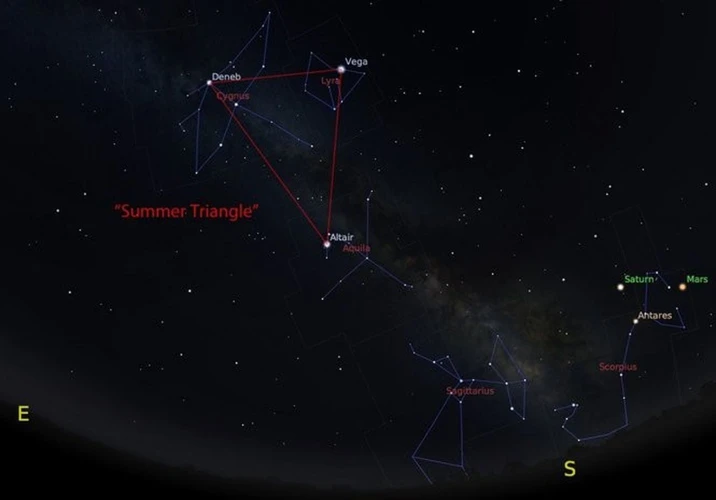
During the summer months, skywatchers are treated to some of the most spectacular meteor showers of the year. Two notable meteor showers to watch during this season are the Perseid Meteor Shower and the Delta Aquarid Meteor Shower. The Perseid Meteor Shower, which takes place in August, is considered one of the most reliable and popular meteor showers, offering a dazzling display of up to 100 meteors per hour at its peak. The Perseids are known for their fast and bright meteors, leaving captivating trails of light behind them. On the other hand, the Delta Aquarid Meteor Shower, which occurs from late July to mid-August, is characterized by its fainter but still beautiful meteors. With an average of 20 meteors per hour, this shower is best viewed from the Southern Hemisphere, although it can still be observed in the Northern Hemisphere. Both of these meteor showers offer the perfect opportunity to gather with friends, family, or fellow astronomy enthusiasts to marvel at the wonders of the night sky and make lasting memories.
1. Perseid Meteor Shower
The Perseid meteor shower is one of the most highly anticipated celestial events of the year. Named after the constellation Perseus, this annual shower is known for its impressive display of shooting stars. It typically takes place from mid to late August when the Earth passes through the debris left behind by the comet Swift-Tuttle. The Perseids are famous for producing a high number of bright and fast meteors, making them a favorite among skywatchers. With peak activity usually occurring around August 12th to 13th, the Perseid meteor shower offers sky enthusiasts a chance to witness dozens of meteors streaking across the sky in just a single hour. To make the most of your viewing experience, it’s recommended to find a dark location away from city lights, lie back, and allow your eyes to adjust to the darkness. With its dazzling display, the Perseid meteor shower never fails to leave spectators in awe. So mark your calendar and prepare for a night filled with celestial wonders.
2. Delta Aquarid Meteor Shower
The Delta Aquarid meteor shower is an annual celestial event that takes place in the late summer months, generally peaking in late July or early August. It gets its name from the constellation Aquarius, as the meteors appear to radiate from this region of the sky. This shower is caused by the Earth passing through the debris left behind by the Marsden and Kracht comets. Although not as well-known as some other meteor showers, the Delta Aquarids still offer a stunning display for those who take the time to observe them. With an average of around 20 meteors per hour during peak activity, viewers can expect to see fast-moving meteors with long, persistent trails. However, the brightness of the Moon can sometimes interfere with visibility. To maximize your viewing experience, it is recommended to find a dark location away from city lights and allow your eyes to adjust to the darkness. The Delta Aquarid meteor shower serves as a reminder of the vastness and beauty of our universe, and it is an event that astronomy enthusiasts won’t want to miss.
The Best Meteor Showers of Fall
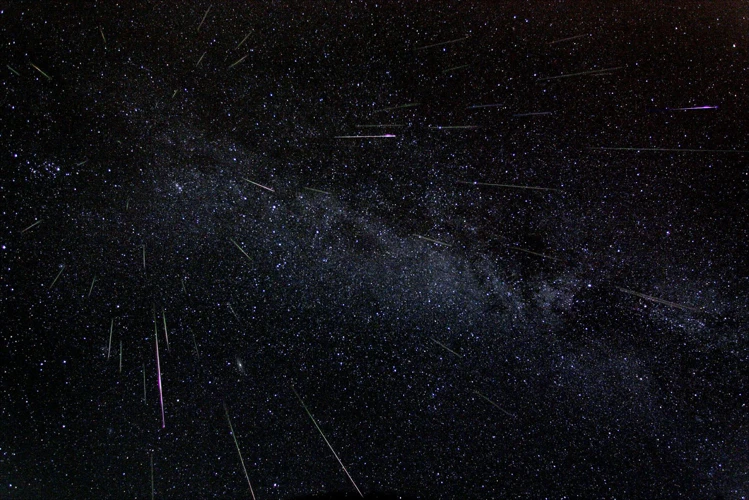
Fall is a season filled with captivating meteor showers that leave us awe-struck by the wonders of the universe. Among the best meteor showers of fall, the Orionid Meteor Shower takes center stage. Named after the constellation Orion, this meteor shower occurs between late October and early November each year. The Orionid Meteor Shower is associated with Halley’s Comet, one of the most famous comets in history. As our planet passes through the dust and debris left behind by Halley’s Comet, we are treated to a magnificent display of shooting stars. This meteor shower is known for its fast-moving meteors and bright fireballs that streak across the night sky. With its radiant point near the constellation Orion, observers can enjoy the sight of meteors seemingly originating from this mighty hunter of Greek mythology. So mark your calendars, find a cozy spot under the stars, and witness the spectacle of the Orionid Meteor Shower, a celestial event that will leave you in wonder and amazement.
1. Orionid Meteor Shower
The Orionid Meteor Shower is an annual cosmic event that occurs in late October to early November. Named after the constellation Orion, this meteor shower is caused by the Earth passing through the debris left behind by Halley’s Comet. Known for its fast-moving meteors, the Orionids can be quite a spectacle to behold. With an average of 20 meteors per hour, this shower showcases bright and fast shooting stars, making it a favorite among astronomy enthusiasts. The radiant point of the Orionid Meteor Shower is located near the star Betelgeuse in the Orion constellation. To maximize your viewing experience, find a dark area away from city lights and give your eyes at least 20 minutes to adjust to the darkness. The best time to observe the Orionids is during the pre-dawn hours when the radiant point is highest in the sky. Although the Orionids may not be as prolific as some other meteor showers, the sheer speed and brightness of the meteors make it a mesmerizing event not to be missed. So mark your calendars and be prepared to witness the celestial fireworks of the Orionid Meteor Shower.
2. Leonid Meteor Shower
The Leonid Meteor Shower is one of the most highly anticipated celestial events of the fall season. It is known for its spectacular display of shooting stars that appear to emanate from the constellation Leo. The Leonids are associated with the comet Tempel-Tuttle, which orbits the Sun every 33 years. During certain years, when the Earth passes through a particularly dense portion of the comet’s debris trail, the meteor shower can produce an incredible meteor outburst, resulting in hundreds or even thousands of meteors streaking across the sky per hour. These outbursts are rare and unpredictable, making them all the more special for eager stargazers. The Leonids are known for their fast and bright meteors, often leaving long and colorful trails as they burn up in our atmosphere. The best time to view the Leonid Meteor Shower is during the pre-dawn hours when Leo rises above the horizon. Find a dark location away from city lights, lie back, and enjoy the celestial spectacle as the Leonids light up the night sky. So mark your calendars and keep an eye out for the next Leonid outburst, as witnessing such a breathtaking celestial event is an experience you won’t want to miss.
The Best Meteor Showers of Winter
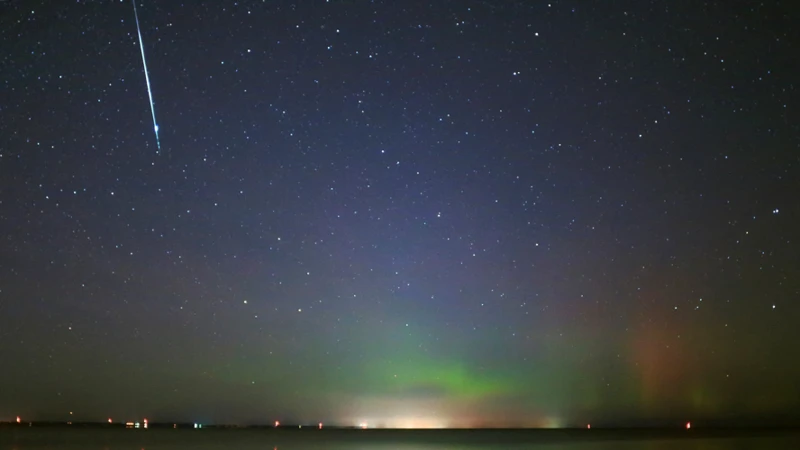
During the winter months, we are treated to some of the most dazzling meteor showers of the year. One of the most anticipated meteor showers is the Geminid Meteor Shower. Known for its stunning display of bright, colorful meteors, the Geminids peak in mid-December. This meteor shower is caused by the debris left behind by the asteroid 3200 Phaethon. As Earth passes through this debris field, we are treated to a show of shooting stars originating from the constellation Gemini. With its high meteor count and bright fireballs, the Geminid Meteor Shower is a must-watch event for any stargazing enthusiast. Another notable winter meteor shower is the Quadrantid Meteor Shower, which peaks in early January. Although its radiant point does not correspond to a current constellation, the Quadrantids still produce an impressive display, often featuring bright and persistent meteors. Their origin is believed to be from an ancient comet or an asteroid-like object. Despite their relatively short peak period and unpredictable nature, the Quadrantids are worth braving the winter chill for a chance to witness their celestial beauty firsthand. So bundle up, mark your calendars, and keep your eyes to the sky for these captivating winter meteor showers.
1. Geminid Meteor Shower
The Geminid Meteor Shower is one of the most anticipated celestial events of the winter season. It typically occurs in mid-December and is known for its breathtaking display of shooting stars. What sets the Geminids apart from other meteor showers is that they are not caused by a comet but by an asteroid called 3200 Phaethon. This makes the Geminids unique and particularly intriguing to astronomers and enthusiasts alike. The radiant point of the Geminid Meteor Shower lies in the constellation Gemini, hence its name. During its peak, observers can expect to see an impressive number of meteors streaking across the sky, sometimes reaching up to 120 meteors per hour in optimal viewing conditions. The Geminids are also known for their vibrant and long-lasting meteors, which can leave trails that linger in the sky for several seconds. To witness this spectacular event, it is best to find a dark location away from city lights, lie back, and gaze at the sky with patience. The Geminid Meteor Shower is truly a sight to behold, showcasing the beauty of the cosmos and reminding us of the vastness of our universe.
2. Quadrantid Meteor Shower
The Quadrantid Meteor Shower is one of the most active and impressive meteor showers that occurs annually in early January. Named after the now-obsolete constellation Quadrans Muralis, this meteor shower is known for its intense peak activity and bright meteors. With an estimated peak rate of 120 meteors per hour, the Quadrantids can offer a spectacular show for dedicated observers. However, unlike other meteor showers, the peak activity of the Quadrantids is relatively short, lasting only a few hours. This makes timing crucial for catching the best view of this meteor shower. The Quadrantids are believed to originate from asteroid 2003 EH1, which is thought to be an extinct comet nucleus. Interestingly, this meteor shower has been observed for over 200 years, with reports dating back to the early 1800s. While the Quadrantids can be challenging to observe due to their short peak duration and cold winter temperatures, they are well worth the effort for avid sky-watchers. So bundle up, find a dark and open sky, and prepare to witness the dazzling Quadrantid Meteor Shower in all its glory.
Additional Resources:
– To learn more about the significance of celestial events like meteor showers in astrology, check out our article on astrological houses interpretation.
Conclusion

In conclusion, meteor showers provide us with an awe-inspiring glimpse into the vastness and beauty of our universe. These celestial events, resulting from the interaction between Earth and comet debris, offer a magical display of shooting stars that ignite our imagination and curiosity. Whether it’s the Lyrids in the spring, the Perseids in the summer, the Orionids in the fall, or the Geminids in the winter, each meteor shower holds its own unique charm and allure. As we marvel at the streaking meteors dancing across the night sky, we are reminded of the grandeur of the cosmos and our place within it. So mark your calendars, grab a comfy blanket, and venture outside to witness the splendor of these natural light shows. The best meteor showers await, ready to awe and inspire us with their celestial beauty.
Frequently Asked Questions

1. What causes a meteor shower?
A meteor shower is caused when the Earth passes through the debris left behind by a comet as it orbits the sun. The debris, consisting of dust and small rocks, enters our atmosphere and creates the streaks of light we see as meteors.
2. When is the best time to view meteor showers?
The best time to view meteor showers is when the sky is darkest, typically after midnight. However, the timing can vary depending on the specific meteor shower and your location. It’s always a good idea to check the dates and peak times for each meteor shower you wish to observe.
3. How often do meteor showers occur?
Meteor showers are not a daily occurrence but rather happen at specific times of the year when the Earth crosses paths with the debris left by a comet. Some meteor showers occur annually, while others are more infrequent or occur at irregular intervals.
4. What is the difference between a meteor and a meteoroid?
A meteoroid is a small piece of rock or debris in space. When a meteoroid enters the Earth’s atmosphere and burns up, it is called a meteor. If a meteoroid survives the journey through the atmosphere and lands on Earth’s surface, it is called a meteorite.
5. Can I see meteor showers with the naked eye?
Yes, you can see meteor showers with the naked eye. In fact, using binoculars or telescopes may limit your field of view and make it more challenging to observe the full extent of the meteor shower.
6. What is the best way to photograph a meteor shower?
To photograph a meteor shower, it is recommended to use a DSLR camera with a wide-angle lens and a sturdy tripod. Set your camera to manual mode, use a wide aperture, a high ISO, and a long exposure time. Patience and multiple attempts are often required to capture the perfect shot.
7. Are meteor showers dangerous?
No, meteor showers are not dangerous. The meteors burn up in the Earth’s atmosphere before they reach the ground. However, it is important to find a safe and open location away from bright city lights to enjoy the best viewing experience.
8. Can I make a wish on a shooting star?
Making a wish on a shooting star is a fun tradition. While shooting stars are actually meteors, they don’t possess magical powers to grant wishes. Nonetheless, it can be a whimsical and enjoyable experience to make a wish upon spotting a meteor during a meteor shower.
9. How long do meteor showers last?
Meteor showers can last for several days or even weeks, but the peak activity typically occurs within a specific time window, often lasting for a few hours. It’s best to check the schedule for each meteor shower to maximize your chances of witnessing the most meteors.
10. Can I predict where the meteors will appear during a meteor shower?
While it is not possible to predict the exact path of each meteor, you can determine the radiant point, the direction from which the meteors will appear to originate. This is usually associated with a specific constellation. By facing the radiant point, you increase your chances of seeing more meteors during the shower.
References
- The Perseids — the “best meteor shower of the year”
- Meteor shower guide: Up next the Leonids and Geminids
Frequently Asked Questions

1. Can I see a meteor shower from anywhere in the world?
Yes, meteor showers can be observed from anywhere on Earth as long as the sky is clear and you have a good view of the night sky.
2. What is the best time to watch a meteor shower?
The best time to watch a meteor shower is usually during the pre-dawn hours, as the sky is darkest and the meteors are most visible.
3. Do I need any special equipment to watch a meteor shower?
No, you do not need any special equipment to watch a meteor shower. In fact, it’s best to watch with the naked eye to fully experience the beauty of the meteor shower.
4. How many meteors can I expect to see during a meteor shower?
The number of meteors you can expect to see during a meteor shower varies, but on average you may see around 20 meteors per hour during a peak shower.
5. Can I see a meteor shower from a city or do I need to be in a dark location?
You can still see a meteor shower from a city, but the light pollution may reduce the number of meteors you can see. If possible, try to find a dark location away from city lights for the best viewing experience.
6. Can I photograph a meteor shower?
Yes, you can photograph a meteor shower. To capture the meteors, set your camera’s exposure settings for long exposures and use a tripod to keep the camera steady.
7. Are all meteor showers visible every year?
No, not all meteor showers are visible every year. Some meteor showers have periodic cycles, while others are more sporadic and unpredictable.
8. What causes a meteor shower?
A meteor shower is caused when Earth passes through the debris left behind by a comet or asteroid. As the debris enters Earth’s atmosphere, it burns up and creates the streaks of light we call meteors.
9. Are meteor showers dangerous?
No, meteor showers are not dangerous. The meteors burn up high in the atmosphere and pose no threat to people on the ground.
10. Can I make a wish on a shooting star during a meteor shower?
While making a wish on a shooting star is a popular tradition, it is not limited to meteor showers. Any time you see a shooting star, you can make a wish!

